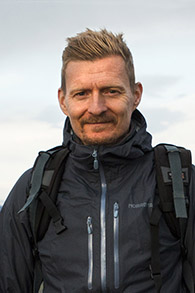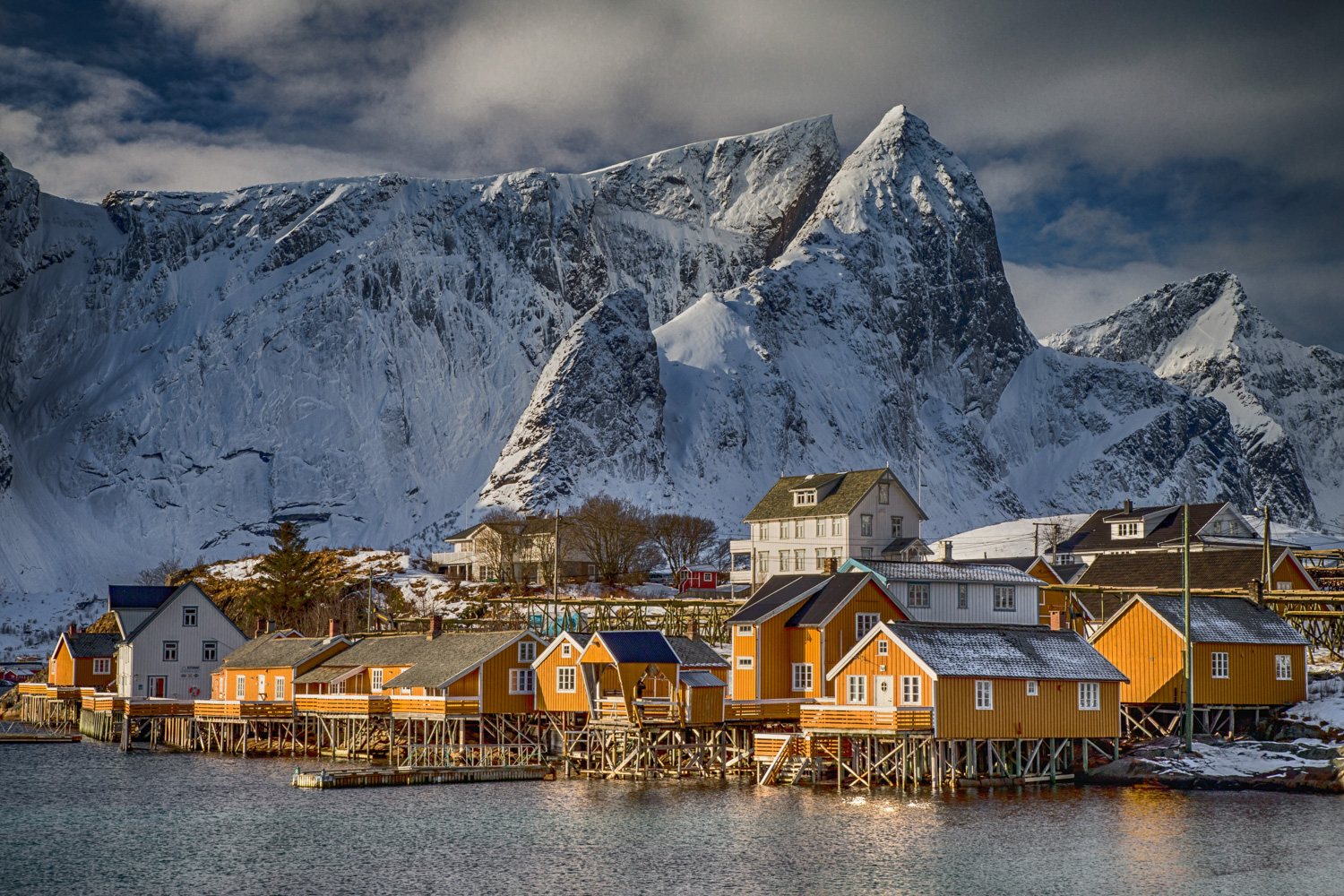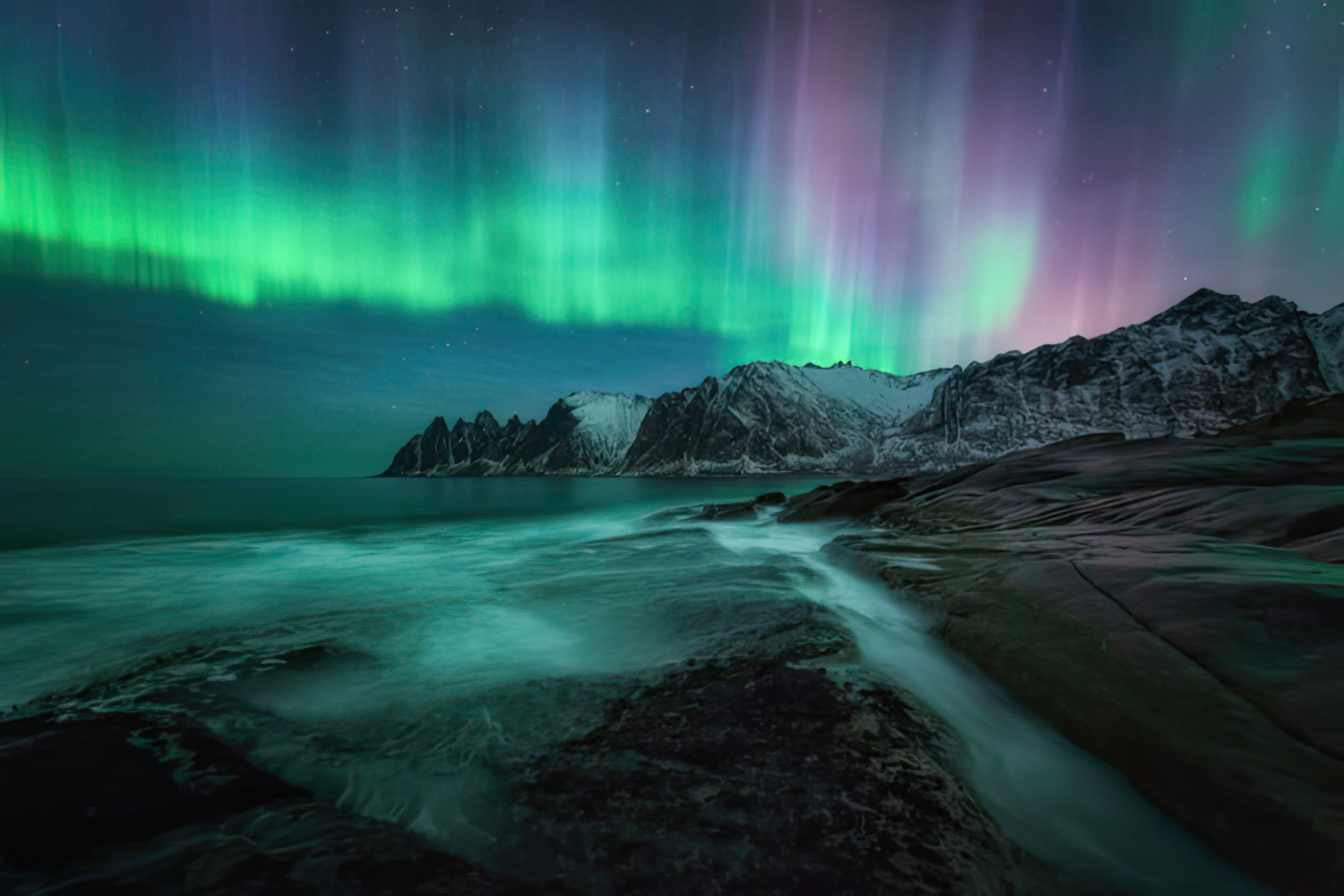When you think of Norway, one of the things that may come to mind first is “north”. WAY up north. The name even sounds like it: North + Way = Norway. Here’s an interesting fact: the southernmost tip of Norway is a small chunk of rock called Pysen, with an area of only about 2,700 square feet, depending on the tide of course. That’s about the size of a roomy suburban 4-bedroom house or about 1/12th the size of the biggest Starbucks, located in Chicago. Anyway, tiny Pysen takes its deep breaths between waves at a latitude of 57.9585°N, about the same as the northern bits of Kodiak Island, Alaska.
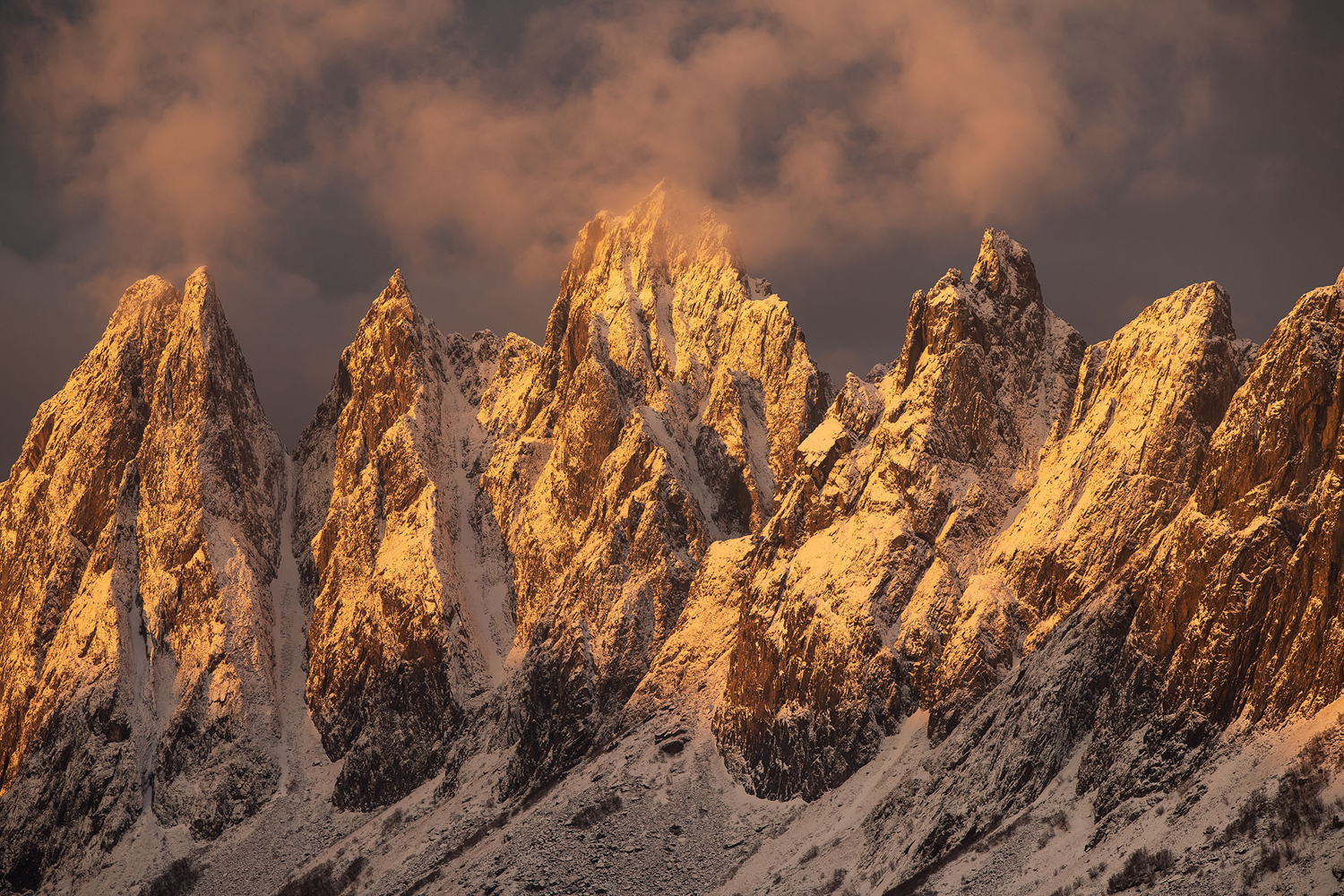
But as far north as Pysen is, 800 miles farther north is Senja Island, in intricately shaped land of rolling hills and jagged mountains, crystal-clear fjords and small fishing communities. You may be asking yourself by now, ok, so what’s the draw? Why run a photo tour way up there of all places? Isn’t it cold and dark in winter? I mean, holy frostbite! How many pairs of socks do you need to wear? Well, I often say you need at least 2 pairs, because it will BLOW YOUR SOCKS OFF!
Senja is well worth the journey, and several pairs of lost socks too, believe me. It’s a land of purity, serenity, stunning beauty and a warm, welcoming people (maybe because hardly anyone visits there!) Unlike our Lofoten photo tour that precedes this one, we rarely see any other photo groups, much less photographers at all. It really hasn’t been discovered as a tourism or as a photography hot spot. At least yet. But one thing is for sure, Senja is a VO photo tour hot spot, and one of my favorites.
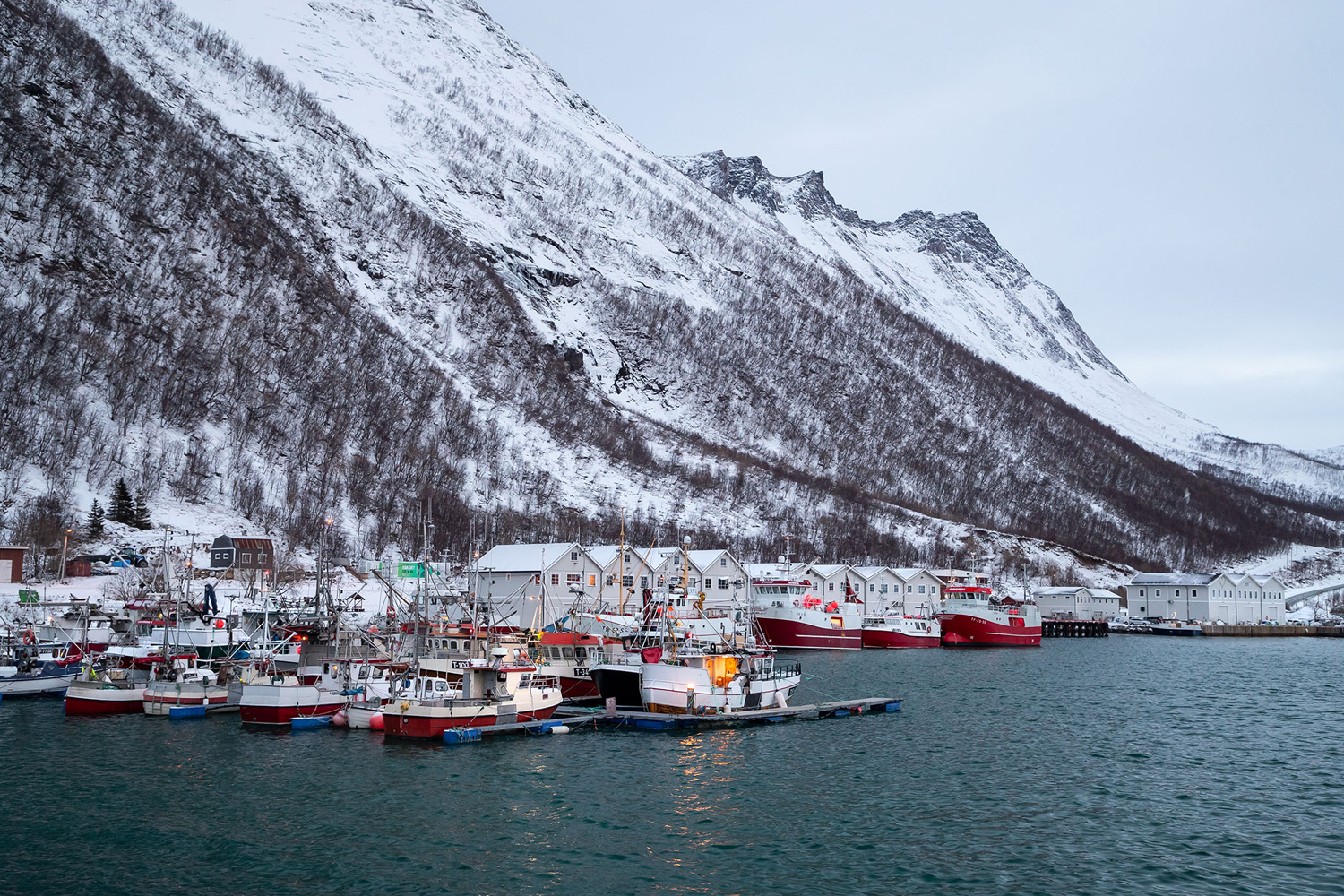
So why not summer? Wouldn’t that be better? Not really. Given that Senja is 200 miles north of the arctic circle, peak summer days are devoid of sunrises and sunsets. The sun just goes around in circles for weeks. That’s kinda boring in my opinion and it’s hard to know when to sleep. Even in early and late summer, the photo/meal/sleep schedule would be upside down and all mixed up, conducive more for a photo tour for the walking dead. We could call it “Sleepless in Senja” but the plot wouldn’t be that funny after a few days. Some may disagree with me of course and say that longer days are better—but let me explain.
Although winter requires more preparation and motivation to get out and shoot, the photo/meal/sleep schedule is way more humane. Unlike December when it’s dark and cold all the time, the second half of February brings temperatures from the low 20’s to the mid 30’s, and daylight hours grow from about 9 hours to nearly 10 hours by the first of March. Even at noon, the light is low and ethereal. Sunrises, sunsets, and twilights linger as the sun gradually ascends and descends along the horizon.
Furthermore, the presence of snow on the landscape adds wonderful texture and contrast, especially along the shorelines, and winter skies can provide more mood and drama. And in winter, it’s also just really quiet. Almost every location we visited, we had to ourselves. You can really feel the energy of a place when you can hear and feel every nuance of the environment.
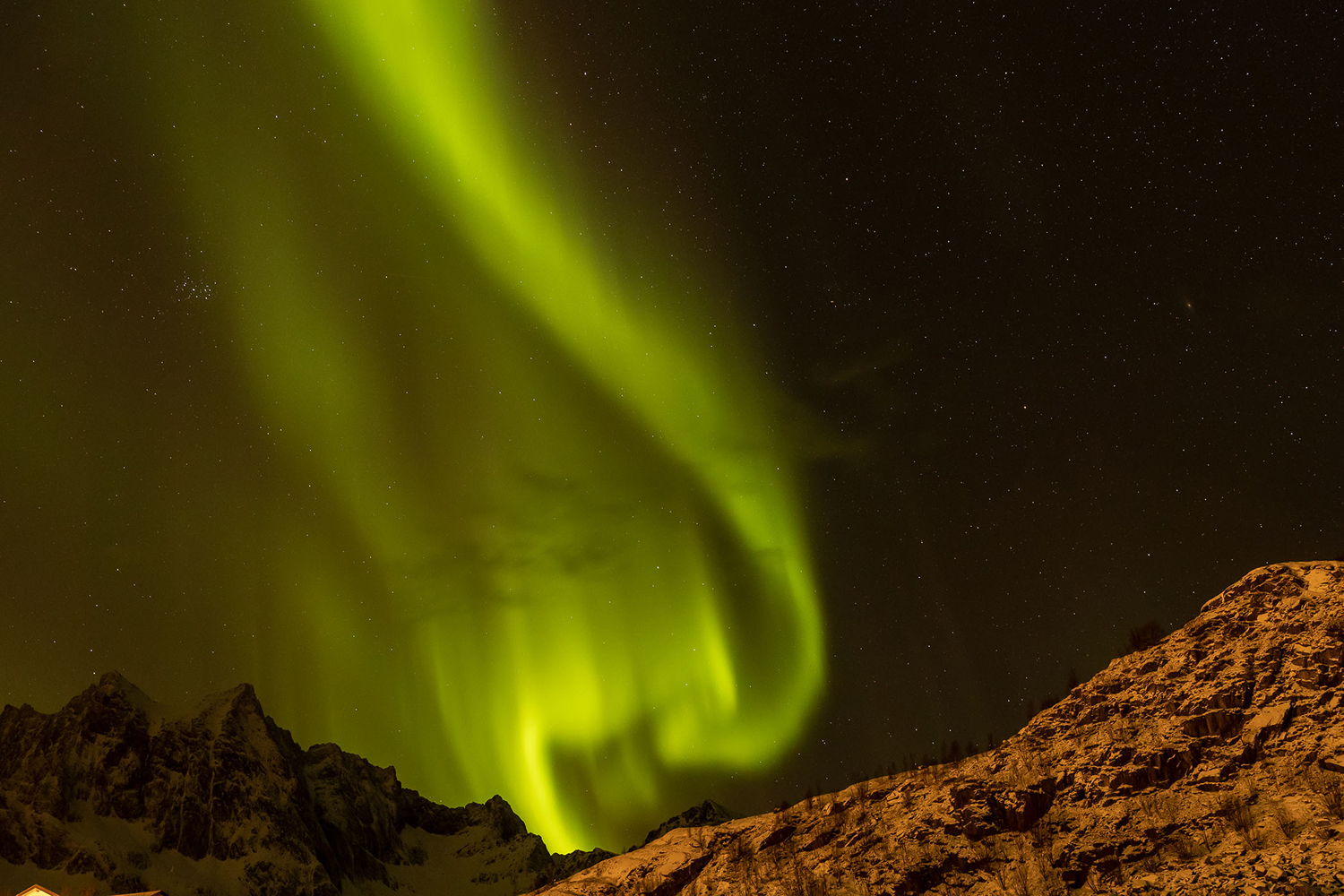
Yes, the nights are long, but that’s another big reason to be there at that time of year. As you’ll see (if you sign up), the darkness of night allows a magical light to be seen – the Aurora Borealis, or Northern Lights.
Although the Aurora is not the primary focus of the trip, it’s high on the priority list, and a major perk of being there in winter. If the skies are clear or partly cloudy, we have a good chance of seeing an otherworldly, mesmerizing, and unforgettable display of nature. And we don’t have to stay out into the middle of the night either. On this tour, aurora photography generally occurs just after dinner. Sometimes we’re out only for an hour, but when it’s good, 2-3 hours is possible. It’s hard to pack it up for the night when the universe is throwing a light show like that. It’s the perfect nightcap after a day of Nordic exploration.
And there’s more good news: solar activity is on the rise, meaning that the frequency and strength of solar winds will likely produce more intense and colorful aurora in the months to come. Are you ready to sign up yet?
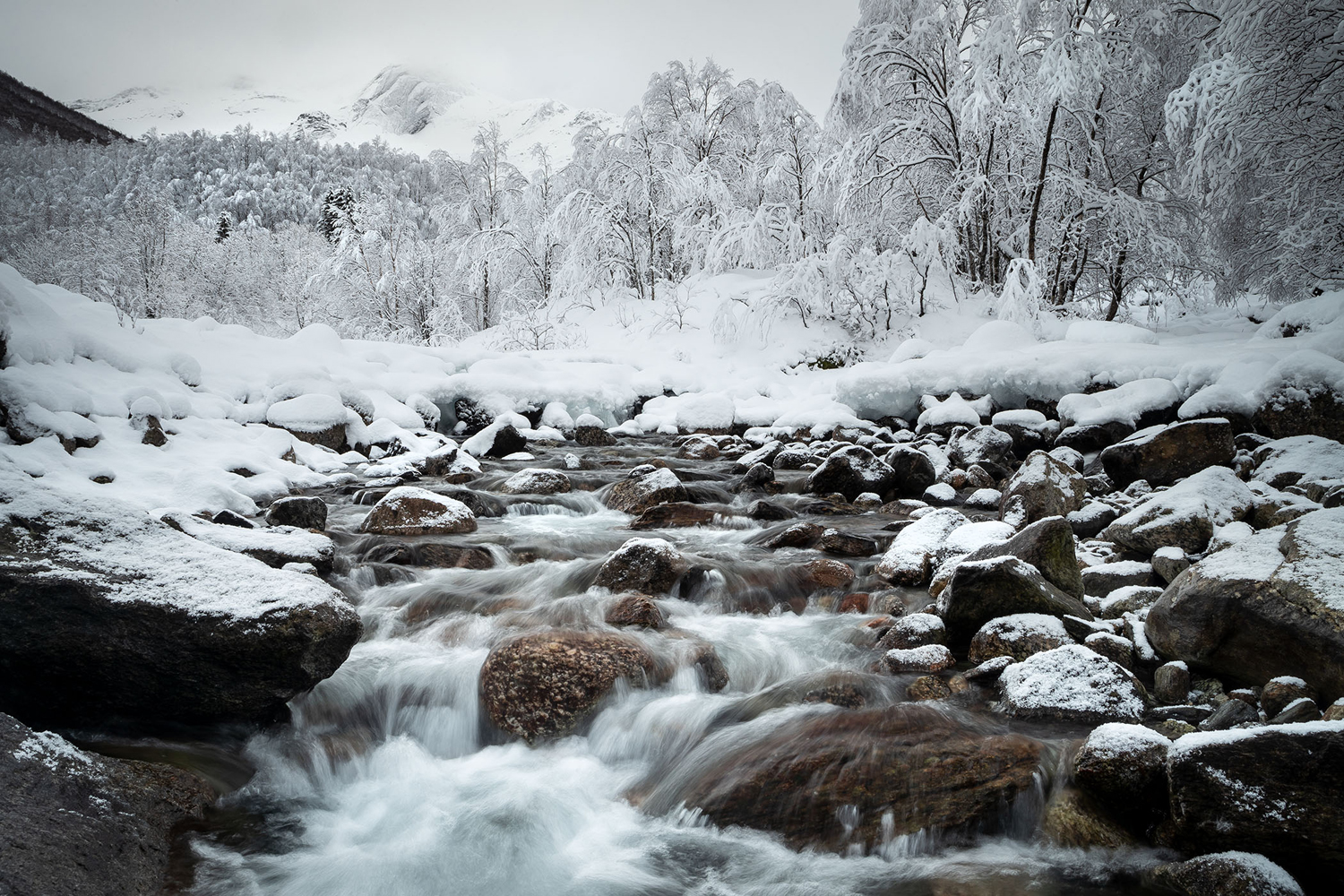
When I mention Senja to our clients on other tours, the first hesitation is the potential for cold weather. But as I mentioned, it’s really not that cold compared to many North American locations in winter. And, as you all know, there’s no such thing as bad (or cold) weather, just bad clothing. That’s why our tour planner and I take special care to make sure everyone is well equipped and layered up for enjoying this magical experience. Besides, feeling a little cold is temporary, whereas the regret for not going is permanent! And rest assured, you’ll be well taken care of by myself, my Norwegian co-leader and another highly experienced guide as well.
Here are a few highlights that come to mind from last year:
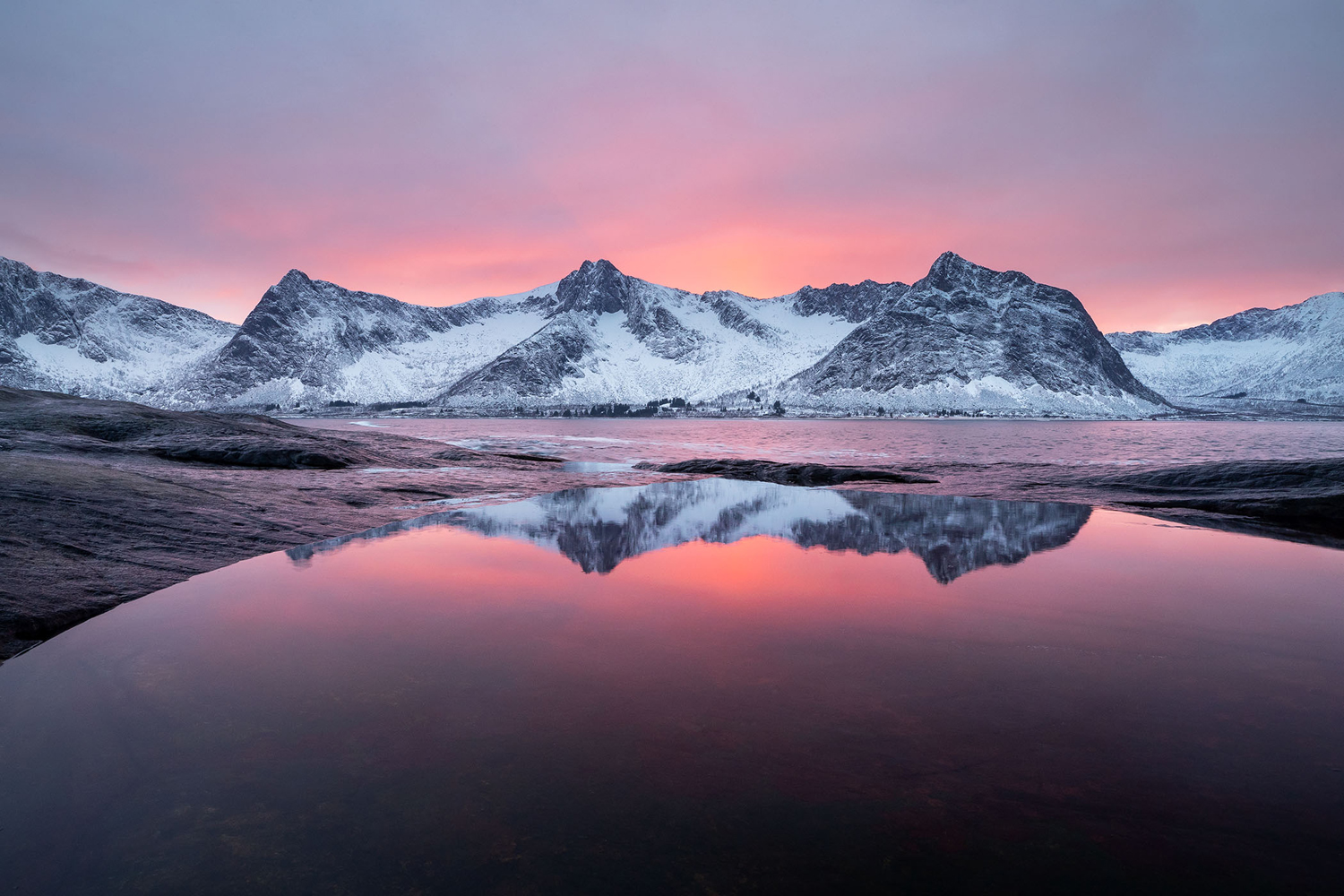
One day along our way to the Bergsbotn utsiktsplattform, a scenic overlook with sweeping views of the fjord below, we stopped along the fjord itself where round, mossy rocks and seaweed sloped gently into the crystal-clear waters. Across the fjord, a handful of peaks rose abruptly out of the shoreline. The cloudy skies reflected intermittently among gentle ripples that lapped at the shore. It was calm and comfortable enough to go without gloves. The intermixing of ripples and reflections created a mesmerizing pattern in the water called sky pools, that made the fjord look like it was made of liquid metal. Every frame was unique, and the process of capturing just the right shapes was addicting. After about 45 minutes of this hypnotic study, we drove up to the platform and enjoyed a totally different perspective on the fjord below.
Perhaps my favorite location in Senja is at the sharp end of the peninsula between Steinfjord and Ersfjord, called Tungeneset. This small rocky shoreline is rich in foreground opportunities, a place where the elements of rock, ice, water and light mingle in rugged, yet artistic ways. Depending on the tide, waves wash and dance among the rocks and leave glassy tide pools that reflect the view and sky beyond. 3 miles to the north, jagged spires rise 1500 feet out of the sea.
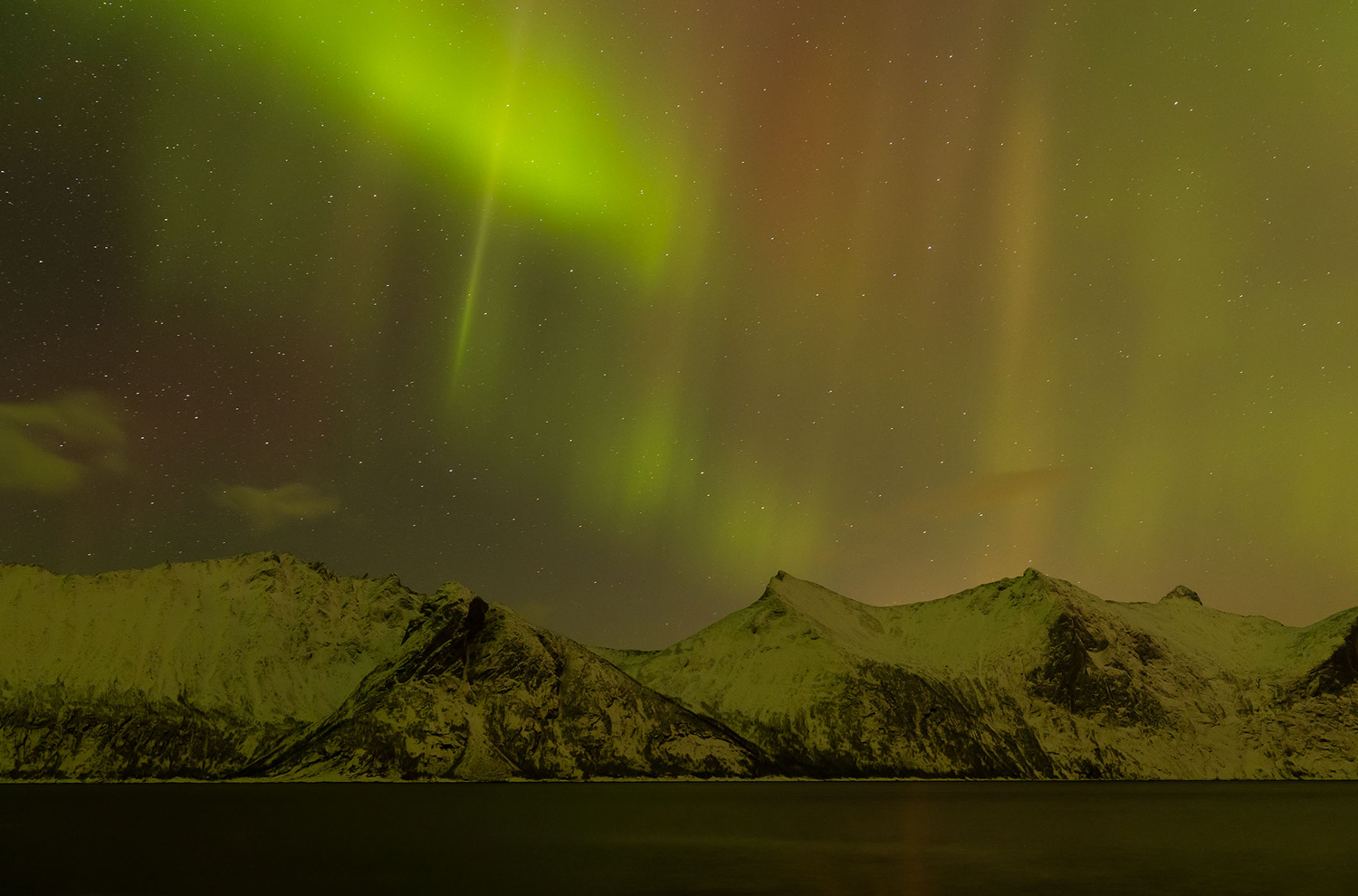
During our sunset visit, a gap opened on the southwest horizon, allowing the sun to beam over the mountains behind us. The sunlight illuminated the spires to the north as if they were on a stage. I was expecting the moment to end any second, but at this latitude, the sun just doesn’t set that quickly. It lingers along an oblique trajectory toward the horizon, becoming warmer with each passing minute. The light became richer, transitioning from yellow to orange to pink. After that, high clouds to the southwest began to turn a soft yet vivid shade of pink, providing the perfect subject to reflect in some of the mirror-like wave pools.
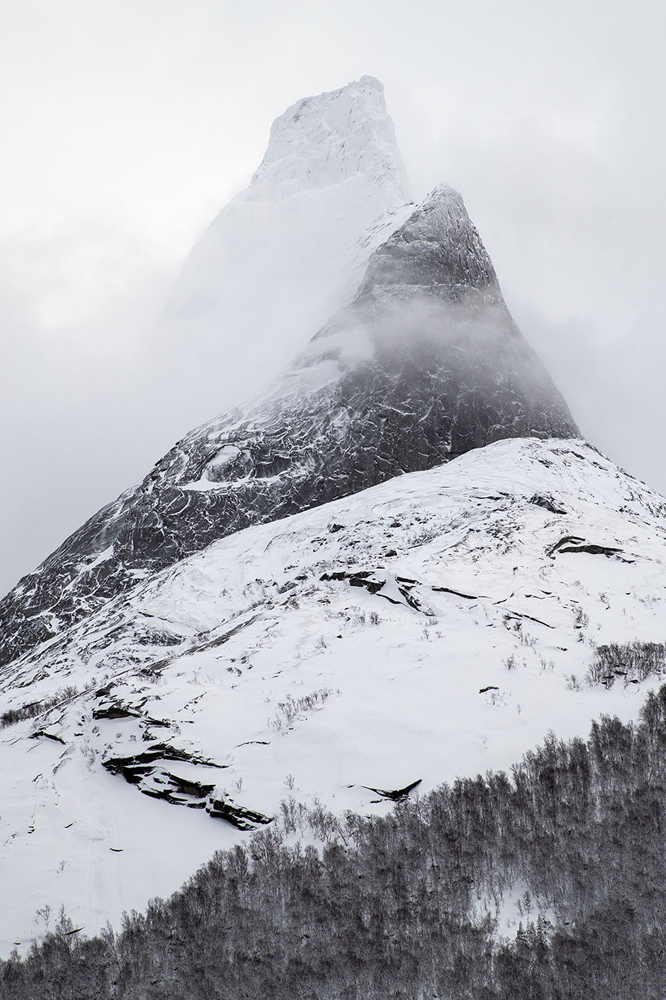
Our Senja tour continues to improve, and includes one inland location at Otertinden, one of Norway’s most photogenic mountains. This triple-peaked, Matterhorn style mountain rises over 4000 feet from the valley and river below, from where we photograph it. If skies are clear, this is one of the most interesting areas to obtain aurora photos. Between the mountain and our cozy accommodations in Vollan, we take advantage of other opportunities such as snow laden forests, lakes, and creeks.
This unforgettable tour begins and ends at the Sure Hotel in Evenes, a clean, well-run efficiency hotel that also serves as the jumping off point for our Lofoten tour. Like a basecamp buzzing with activity, we cross paths there with other photo groups either heading off to Lofoten in eager anticipation or returning with elated tales of grandeur and magical light. Yes, we all agree that Lofoten is pure magic, but we keep our dreamy loop around Senja a secret.

